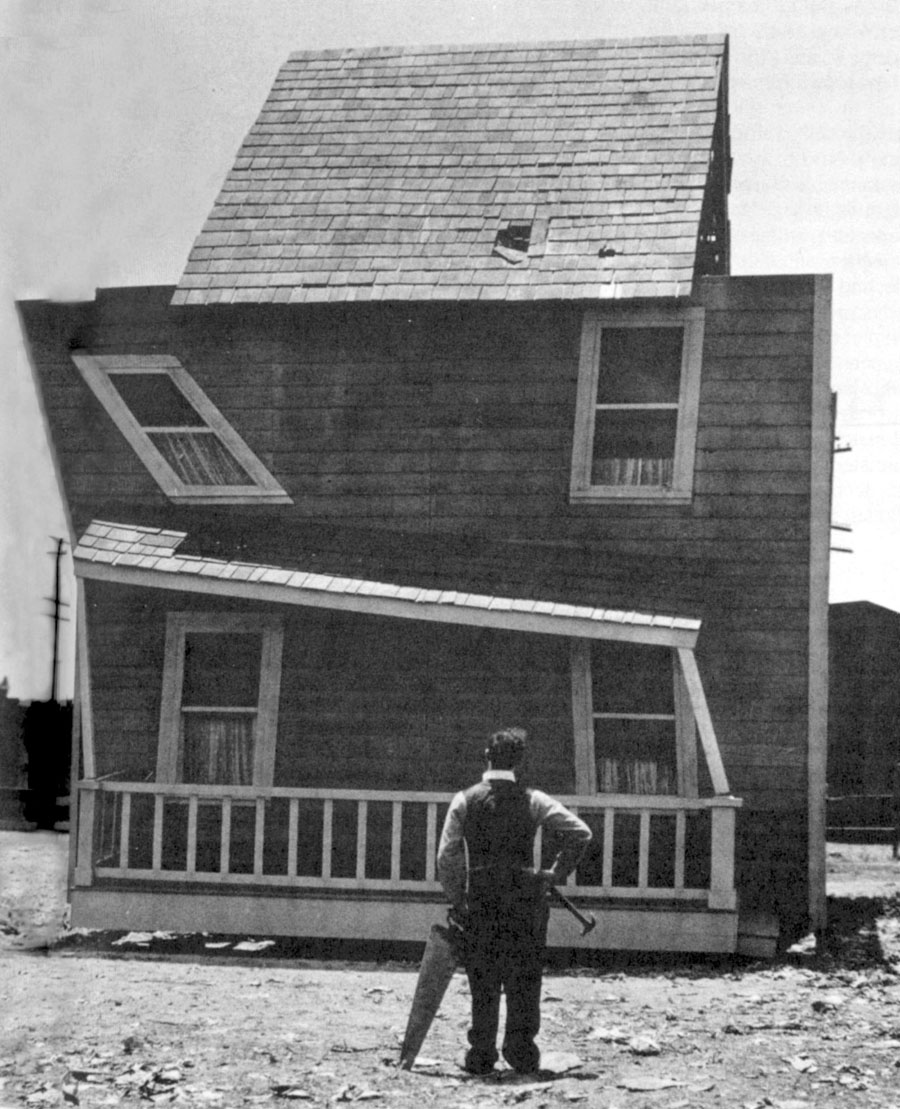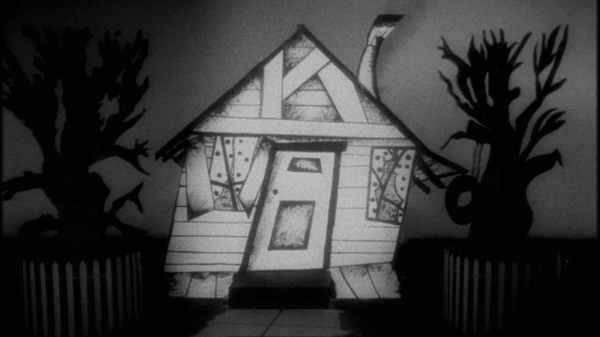Anyway, first up was SNOW WHITE (1916): As the legend goes, a 15 year-old Walt Disney saw this silent version of the Grimm Brothers' fairy tale and it influenced him to the point where he used it as the first animated feature film. Well, the story of Snow White goes back long before this, and if you're looking at it as a template for the Disney cartoon...it's not that obvious. This silent version has way more of the huntsman and the prince. The queen and the witch are still separate characters. The look, feel, characterization are all different. Maybe Disney loved the story, but he went back to the drawing board (literally) in making his version. But then...there are little things that show up. The dwarves washing up for dinner, for example. The helpful animals...which actually made me think of CINDERELLA even more than SNOW WHITE--but certainly Disney loved his adorable animal helpers. When Snow White is poisoned by the apple and is lying in her glass coffin--that image is from this movie (and re-used in SLEEPING BEAUTY.) So while the influence is maybe in smaller, subtler details instead of the big picture, the influence also goes well beyond just Disney's SNOW WHITE. Oh yeah, and as a film in and of itself, it was well made and a lot of fun--easy to see how it could be so influential.
And then I caught the program of Buster Keaton shorts. All movies I had seen before, but so much fun to see with a good audience that laughed heartily in all the right places.
ONE WEEK (1920): Buster is given a house as a wedding present--all he has to do is build it himself. Unfortunately, his spurned rival messes with the plans and he ends up with a bizarre monstrosity.
Now here was something that struck me. Remember the previous night I saw VIDEO DIARY OF A LOST GIRL and mentioned the influences there run from silent films through to something like THE FORBIDDEN ZONE. This flashed into my mind while watching ONE WEEK:
Check out the house from ONE WEEK:

Now look at the house from THE FORBIDDEN ZONE:
And finally, check this out from VIDEO DIARY OF A LOST GIRL:
Pretty interesting, isn't it?
THE SCARECROW (1920): Buster and his fellow farmhand (who live in a wonderfully inventive house. Eating breakfast is an adventure in and of itself) are both after the hand of the farmer's lovely daughter. Wacky hijinx ensue, eventually leading to Buster disguising himself as a scarecrow. And getting the girl--actually matrimony is the recurring theme in these shorts.
THE PLAYHOUSE (1921): It opens with a brilliant all-Buster vaudeville show--including an all-Buster audience (and it bears reminding that this was all done in camera--no CGI, no green screen. All these tricks were done in-camera.) Then Buster wakes up and he's just a stagehand backstage in the theater. But he does get his chance to shine when the monkey escapes and he fills in at the last minute. Pretty hilarious. And, of course, he gets the girl in the end but that's really just a side plot--the recurring gag is that there are twins and he's always grabbing the wrong one.
Total Running Time: 127 minutes
My Total Minutes: 315,378


No comments:
Post a Comment